Among the nice shows I saw, there was Much Without Many, at Messen de Clerq gallery: a group show of seven international artists wherein I discovered the work of Théo Massoulier. The artist presented a series of intriguing, elegant wall-based assemblages inside vitrines (Anthropic Combinations of Entropic Elements/5G, 2020 and Samples, also from 2020). Although most of these hybrid combinations were made of unknown minerals, plants and electronics, one could recognize, at some point, obsolete electronic devices like ethernet cables. Some tiny pieces of iridescent glass reminded me of Vapor Wave visual aesthetic.
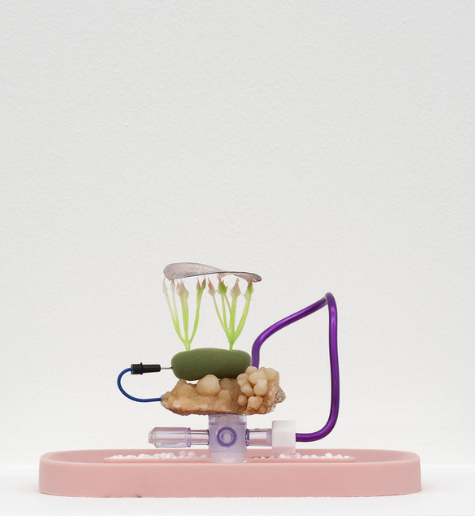
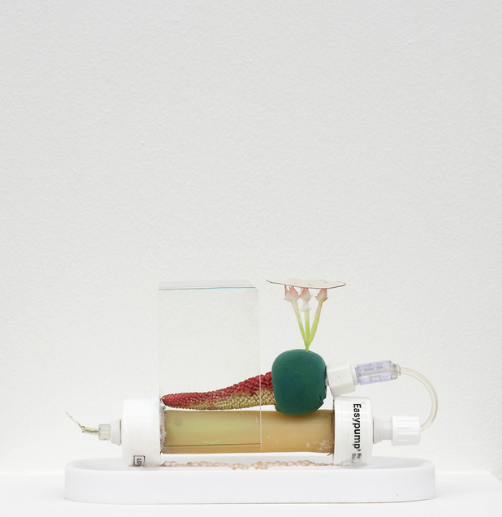

Théo Massoulier, Anthropic Combinations of Entropic Elements/5G ; Samples, 2020
Every compositions/constructions were contained inside the same thermoformed ovoid plastic recipient/receptacle —evoking bio-engeneerig laboratories—each time of a different soft and light pastel color. They appeared to me as 3D models for video games’ stage sets ; or microscopic environments inside which I could project and immerse myself ; but also as relics and still life’s of our communicational and hyperconnected societies.
Then there was VESSELS - On Body Fluids -, a group show of 9 artists, hosted at art space ISLAND. I enjoyed the realistic wall-based water color paintings from Emeline Depas, which one of them represented human testicules (Up Down, 2020), framed by a white rope/lace. The depiction of a stranger’s genitals was un-sexy, crude, pathetic ; and the rope thightening them created a feeling of oppression and pain. Also, as the genitals had been appropriated by the artist and were under spectators’ influence, they no longer appeared as a symbol of domination and pride but, on the contrary, as one of vulnerability and fragility.
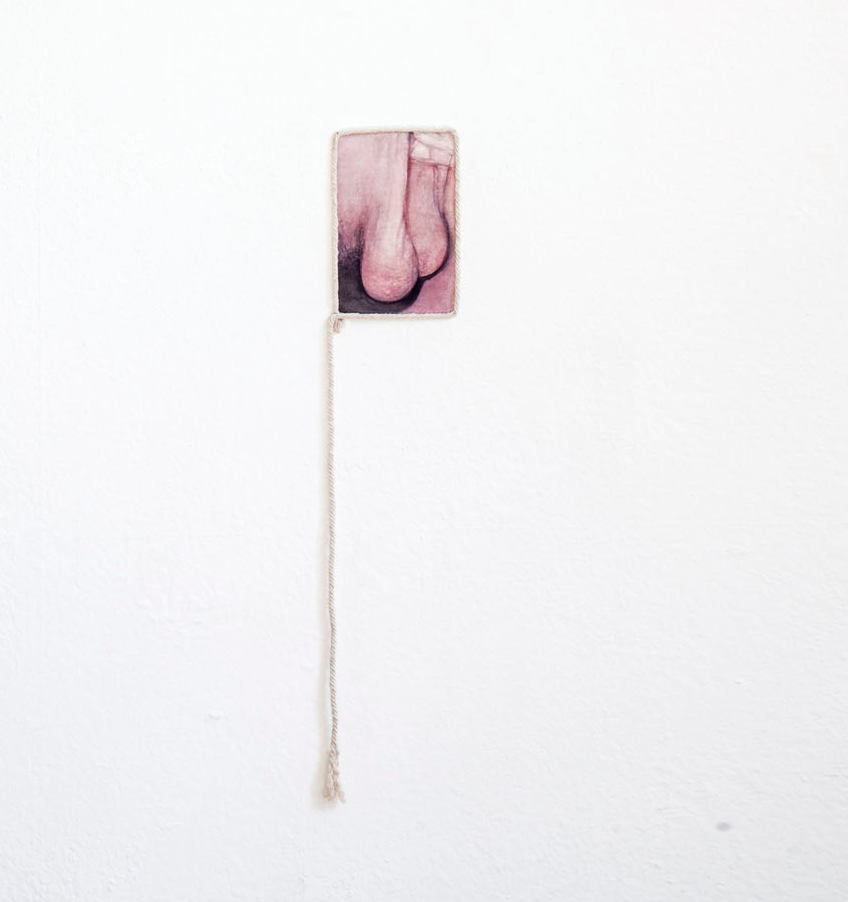
Emeline Depas, Up Down, 2020
I also liked Aline Bouvy's sculpture, Accumulation Primitive (2019), which represented a realistic female body cut between the belly and just after the pubis. The top of the sculpture was entirely covered by a layer of red EuroCent coins, now obsolete and valueless on the market. In here, the female body is being compared to an unworthy piggy bank, an object of desire both for sex and wealth. The combination of money and human body obviously evokes prostitution, but the hairless pubis also suggests pre-puberty stage of life and innocence.

Aline Bouvy, Accumulation Primitive (2019)
Another show was the strange and surrealistic Animal and Sculpture from duo artists Daniel Dewar and Gregory Gicquel at gallery c - l - e - a - r - i - n - g . The show consisted in mostly wooden (oak) sculptures imitating old fashioned artisanal and functional household objects (like cabinets, benches, dresser, etc.) but also wall based reliefs. Each artefact had incrusted sculpted elements like animals (snails, pigs, rabbits), vegetables and human (anonymous) organs like noses, feet, arms, hands and torsos. Some pieces were quite disturbing and abject (but still beautiful and poetic) like the relief of a torso swarmed by snails, or this chest with repeated human arms serving as drawer-pullers, and enthroned by a lying rabbit on top (see pic n°3 below).

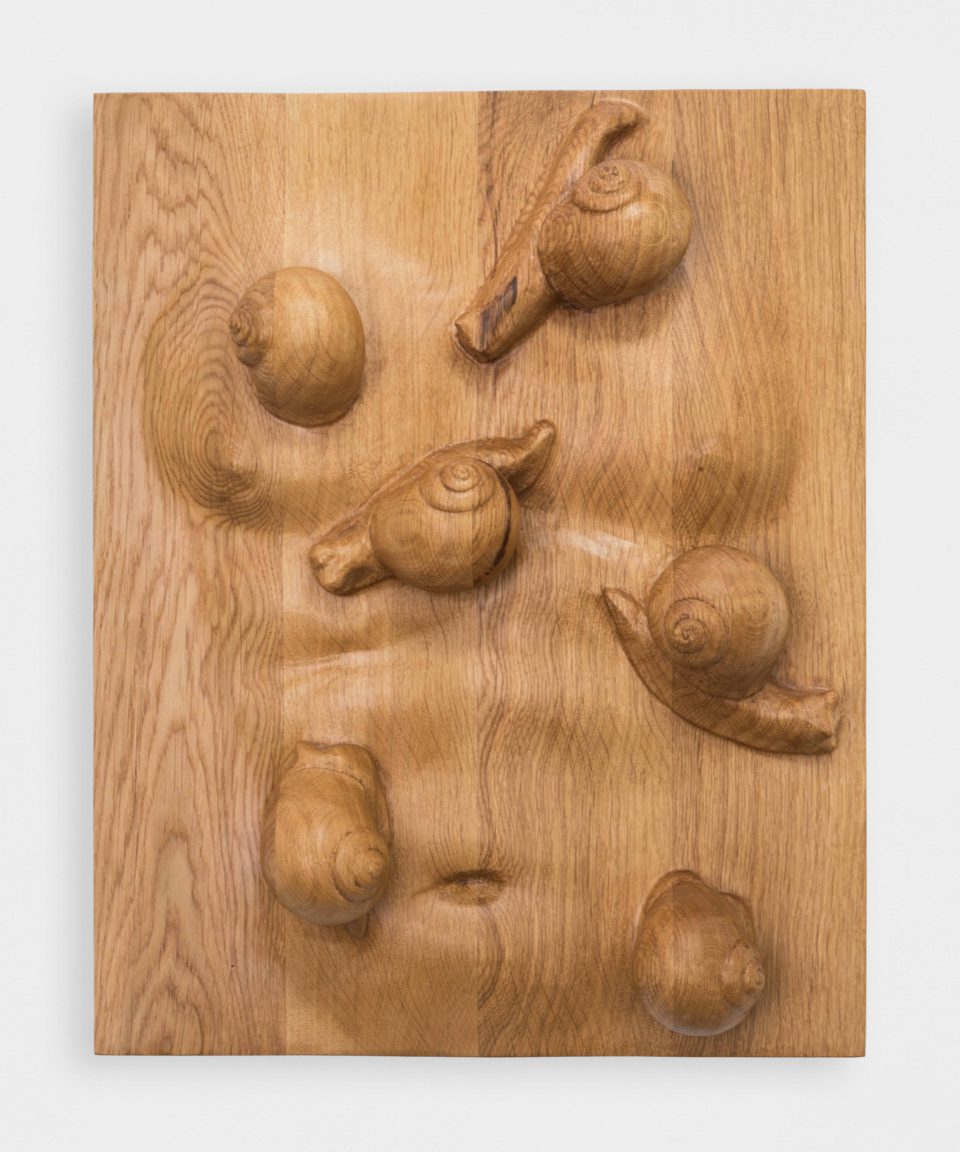
1. Daniel Dewar & Grégory Gicquel, Oak chest of drawers with giant Flanders rabbit and arms, 2020
2. Oak relief with body fragments and snails, 2020
It was a little bit mind fuck, and super intriguing to understand the making process of merging and incrusting such organic shapes objects on wooden flat panels. I was also intrigued to know the symbolic of such animals, over-represented in western art history. Sometimes we see snails and bugs in Vanitas still life paintings that highlight the vanity and ephemerality of materialism and hedonism, so perhaps Dewar and Gicquel's art pieces have similar moralistic purposes and memento mori discourse.

Daniel Dewar & Grégory Gicquel, Oak bench with Colorado beetles, potato flowers and snails, 2020
What I enjoyed most from the show was the series of cute benches with wooden snails swarming and climbing the feet. Each bench had a colorful fabric cushion with digital embroidery creating a grid and a pattern repeating two-dimension images of one same element like bees, flowers (sometimes alternating the colors). Maybe I was more interested in this series because it combined several materials and techniques, but also because of their lightness, colorfulness and playfulness kind of broke the monochromatic, heaviness and monumentality of the show. So it was a nice surprise.
Aaaand last but not least art show I really enjoyed was They Said They Felt, an eco-feminist, queer group show at Cinema Palace -1 gallery space (also in Brussels), which I had been asked to document the performances during the opening party.








Shots from They Said, They Felt group show at Cinema Palace (Brussels)
Basically the show was a total art work, with subtle and precious art pieces and life-art/performances, multicolor lights and experimental-ambiant soundtrack . . . all of that creating a welcoming, warm atmosphere. I've noticed the recurrence of the water element with Apolline Sanguinède's screening video of a sea horizon with zooms making the video going abstract and epileptic ; Set Chevalier vaporizating clay and latex assemblages/sculptures that were hanging on the wall or suspended in the air ; Nina Andre's clay incrusted on the concrete walls like mollusks and seashells, . . . Also, each artist proposed life art/performances that presented a ceremonial, ritual and therefore sacred dimension among them a nail art salon set up by Chloé Van Oost, who endorsed the role of asian migrant workers in western cities' nail salons ; Set Chevalier pouring water on the sculptures ; Luz de Amor reading texts she wrote, inspired by exhibited artworks in the show ; and lastly, my friend Nina Andre switching identity, going non-binary and genderless by having her face make up by Apolline on top of a table/desk covered of shiny fabrics, vestals, mirror etc.
So this is it for my highlights from Brussels’ gallery weekend and other independent shows in the city.
Next up will focus on the We Art XL ‘parcours d’artistes’ which turned out to be completely the opposite of what I expected. Basically what happened is that there was no place left wherein I could exhibit works, so a friend of mine (Babette Cols, who was also participating to the event) invited me to their group show at L'Atelier du Doute ("doubt atelier") which is the place where they live and work with Eugene Pereira Tamayo. They already had Nestor Georget as resident artist but we managed to show works the four of us. I enjoyed team working with them, brainstorming for the title of the show (which was 'Expo Sans Doute', literally 'no doubt art show') and making a visual/poster for the event:
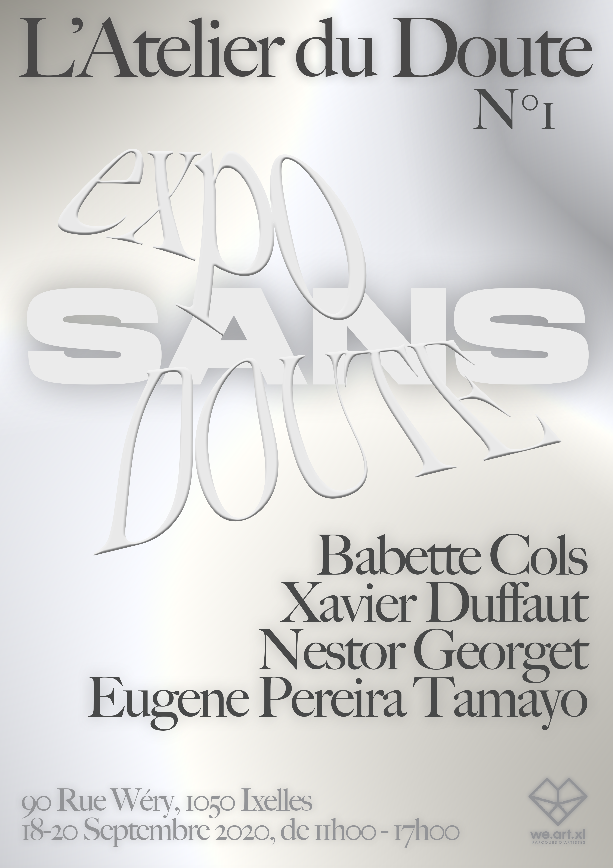
Poster for our group show Expo Sans Doute (Atelier du Doute, Brussels)
Here are some pics of artworks by Babette Cols, Eugene Peireira Tamayo and Nestor Georget:
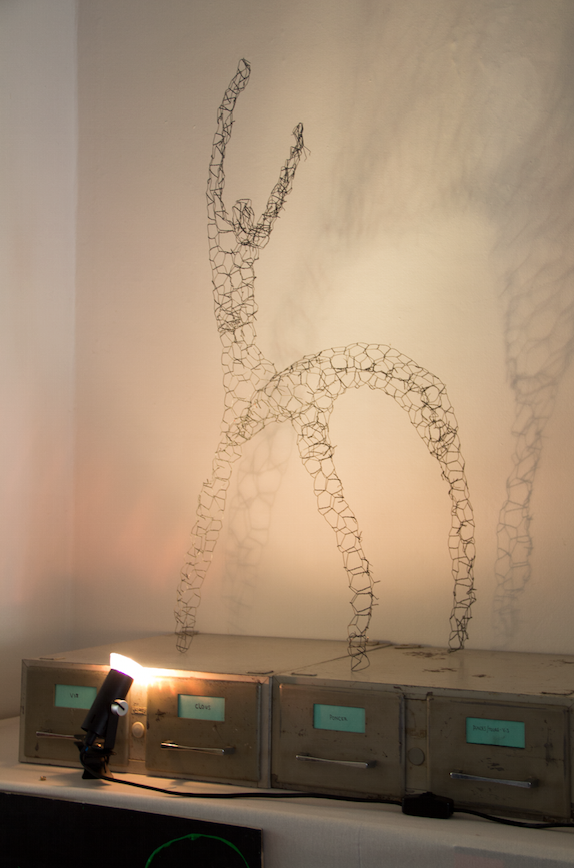



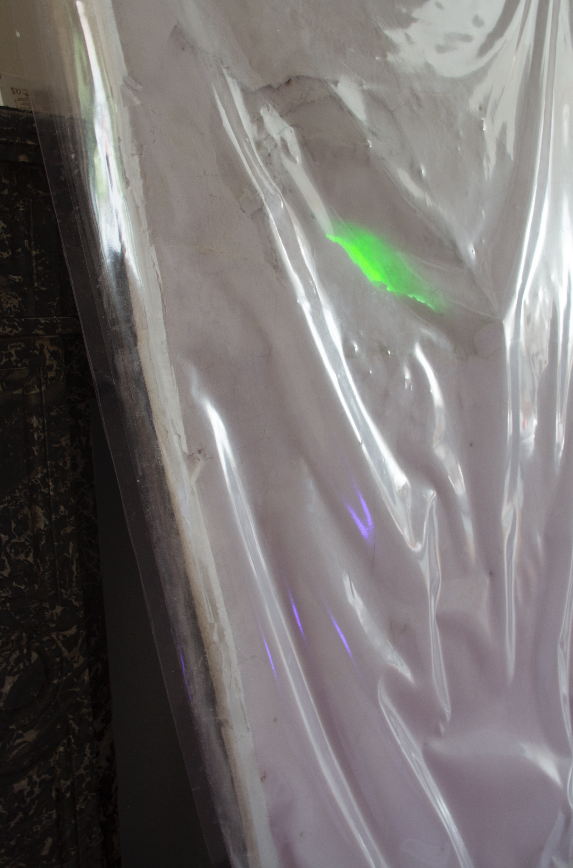
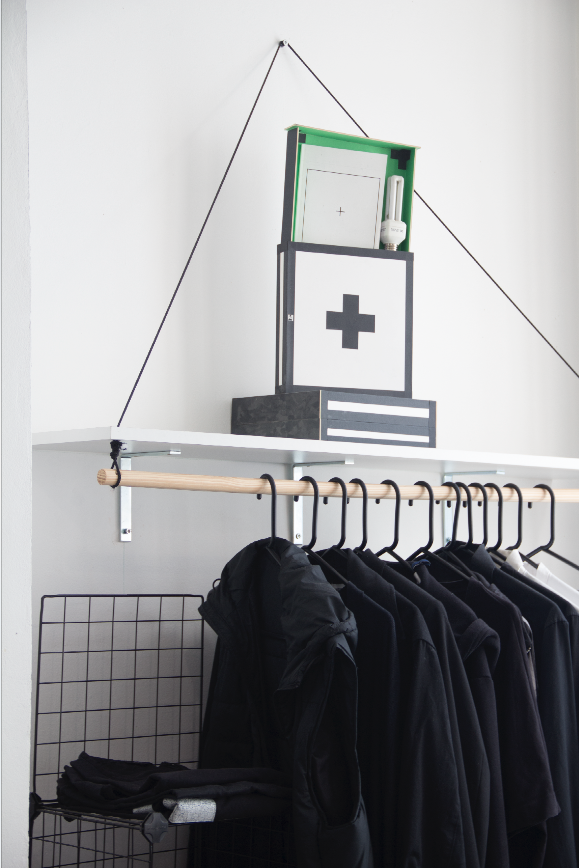
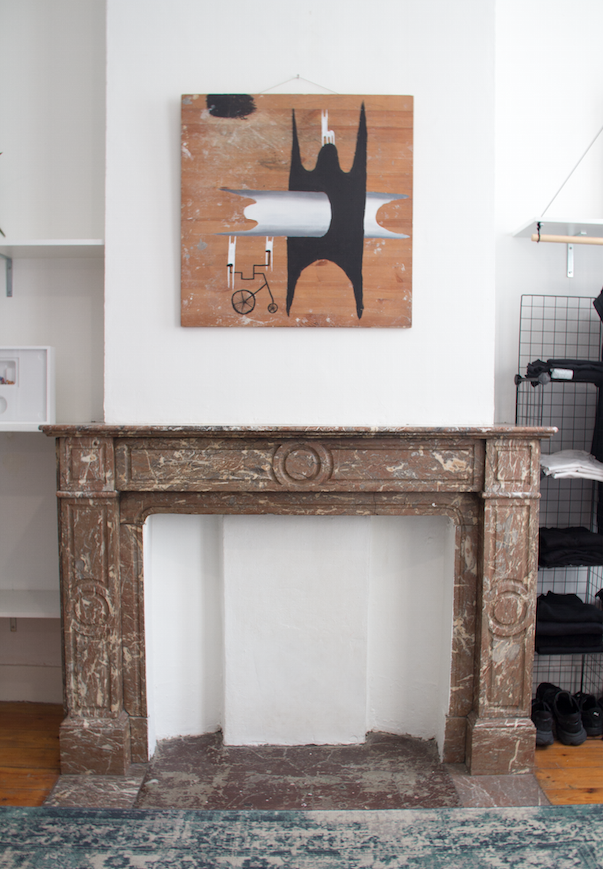

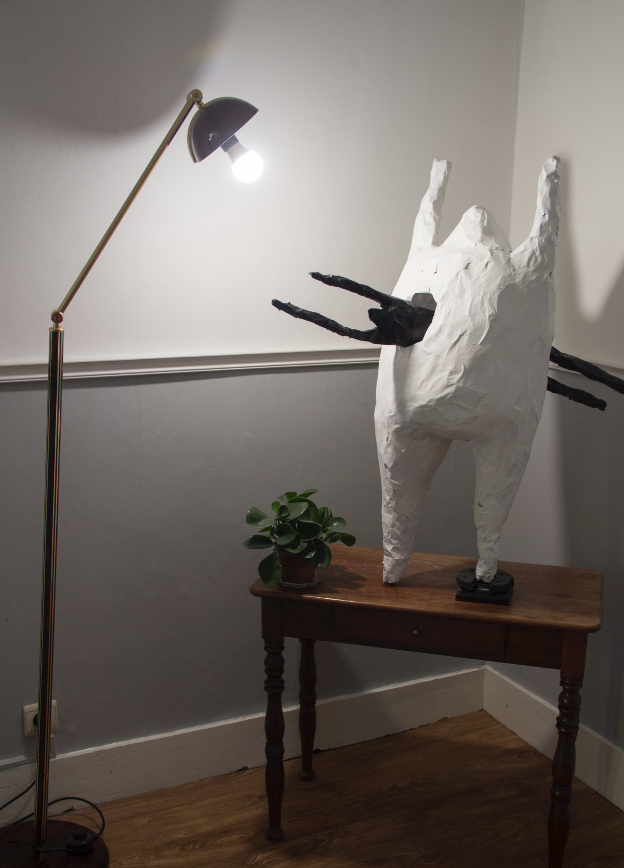

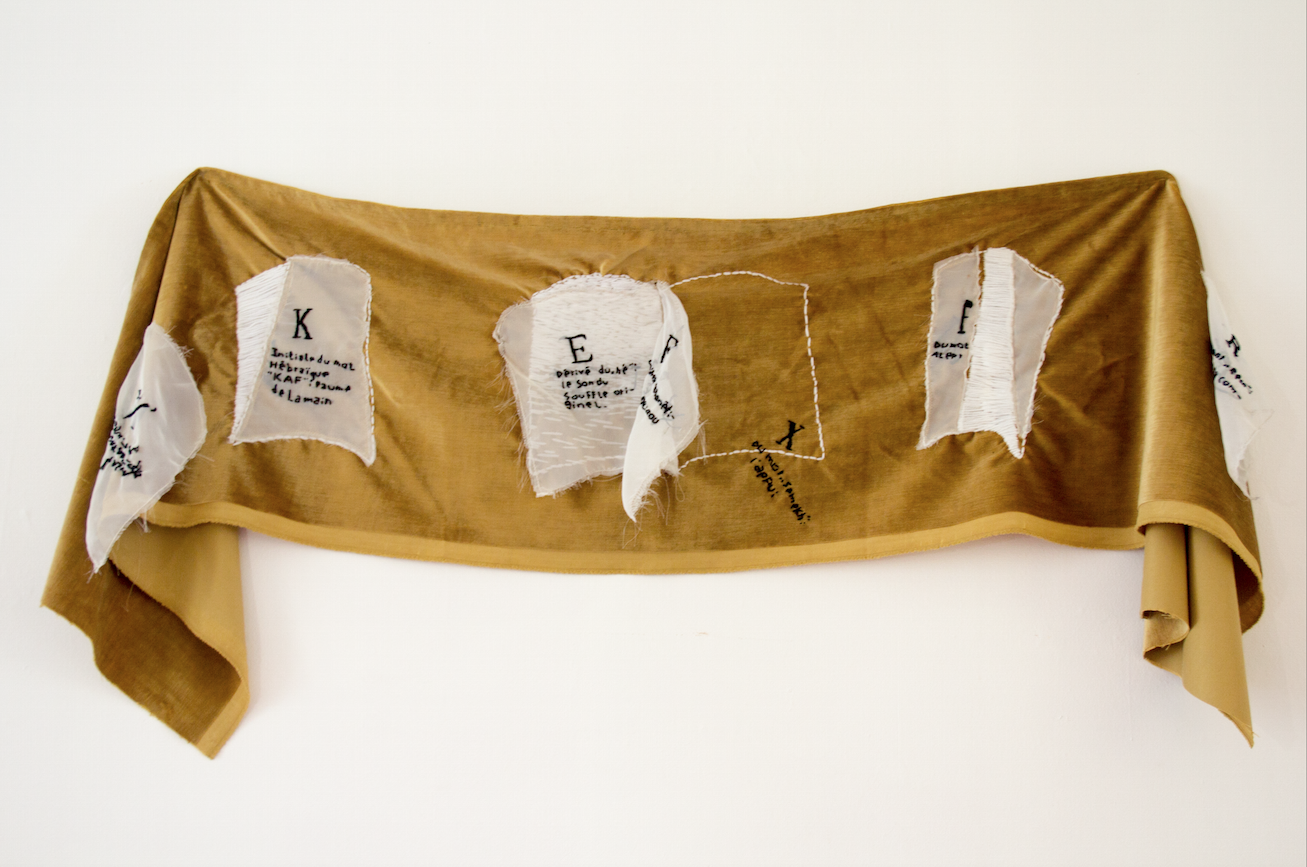


For this show, I’ve made a new video which is a sort of a mash-up/compilation from Youtube videos of people unboxing Apple products (sometimes ASMR), and inside Apple Stores (e.g. for the launch of the last iPhone). The video was displayed on a smartphone, sticked on an artisanal wooden plate that used to be a pious object of devotion with Jesus' portrait in metal bas-relief. At the bottom of the object was an engraved piece of metal with these words 'Souvenir de Communion'. I’ve repeated white fading transitions and put an epic soundtrack to convey a spiritual and transcendantal dimension to the video.
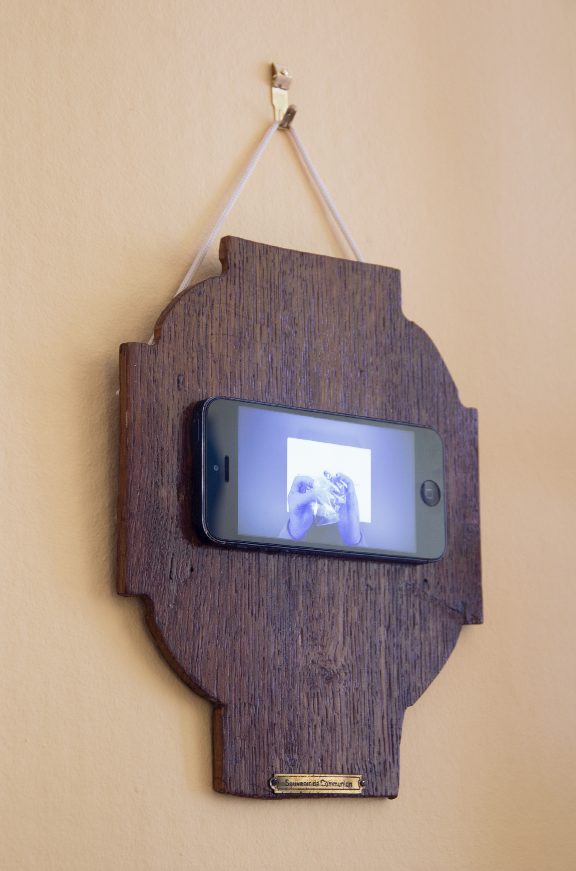
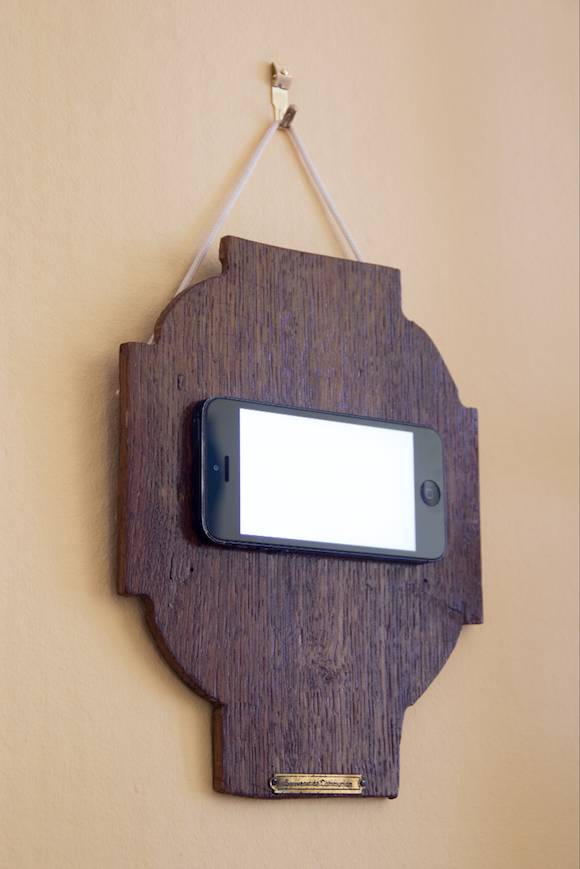
Souvenir de Communion, 2020
Mixed media
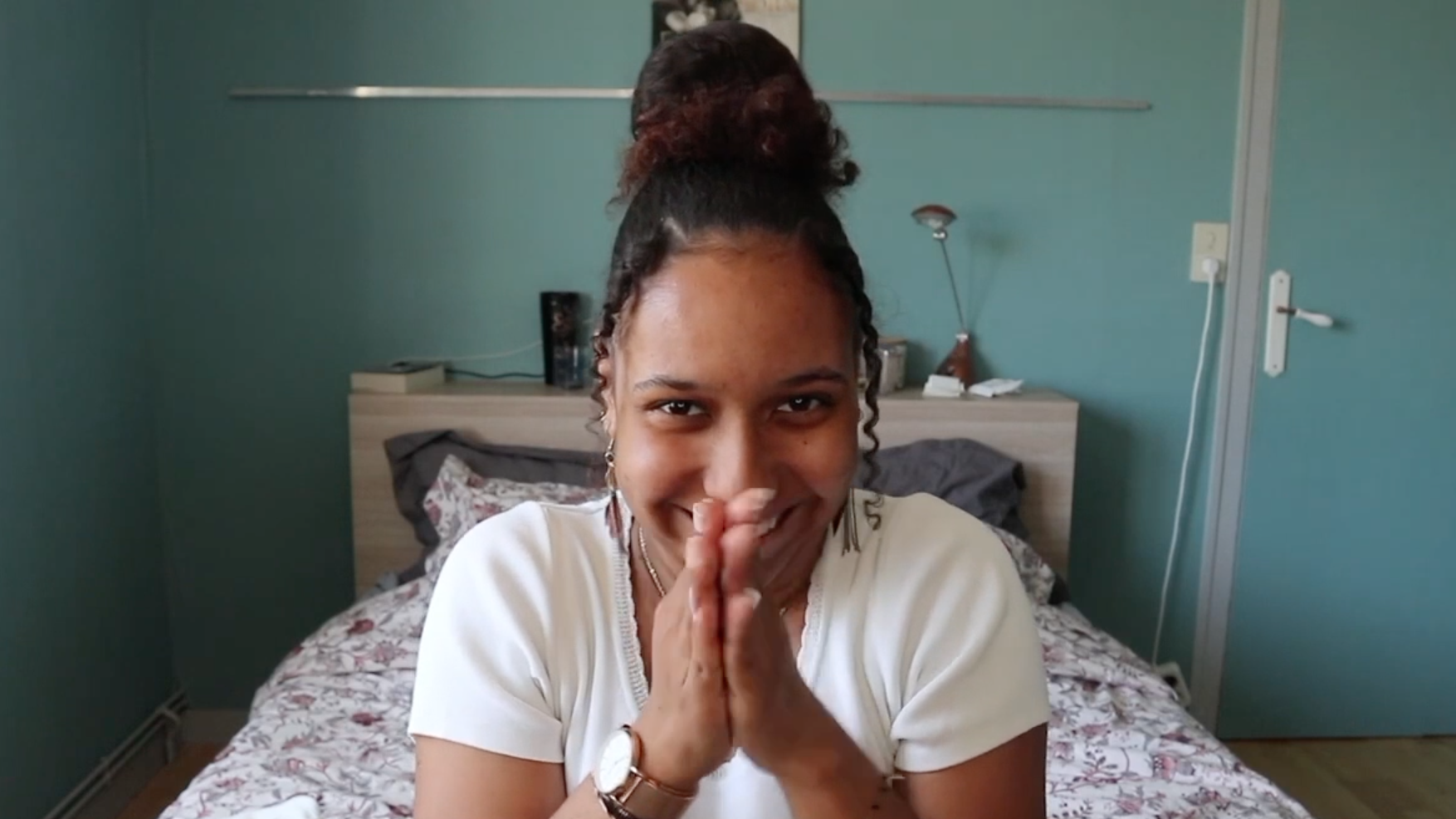
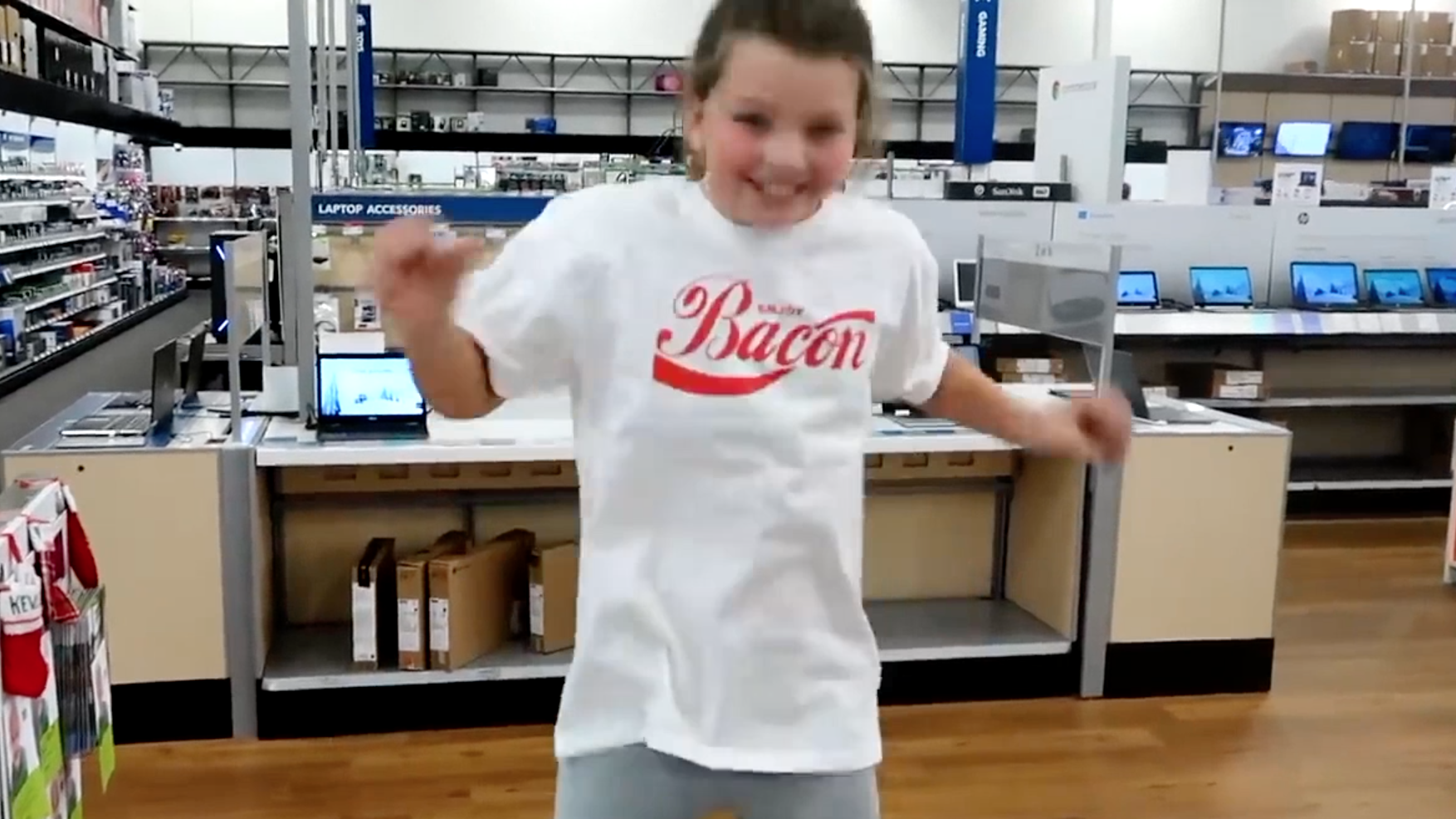
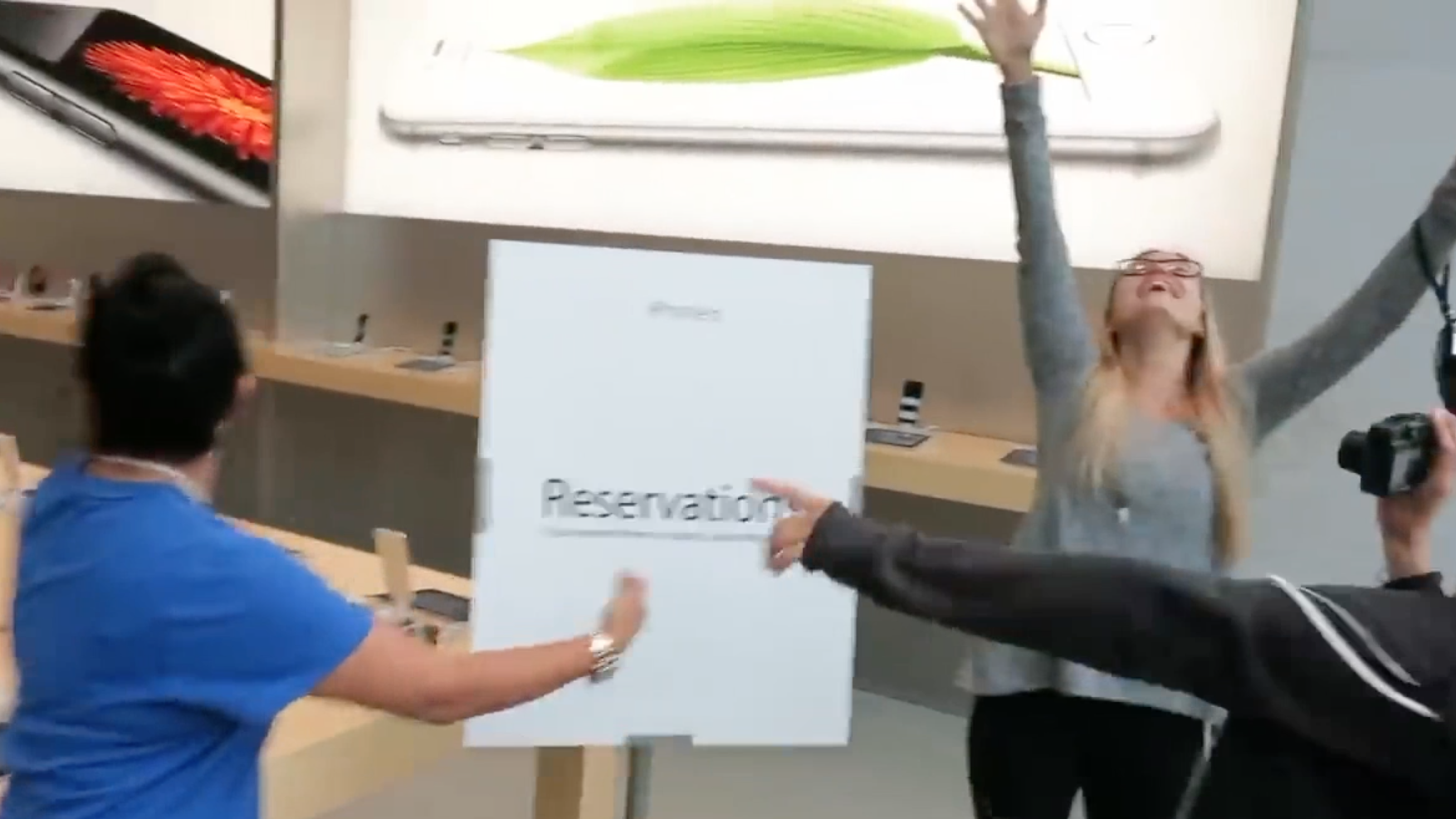
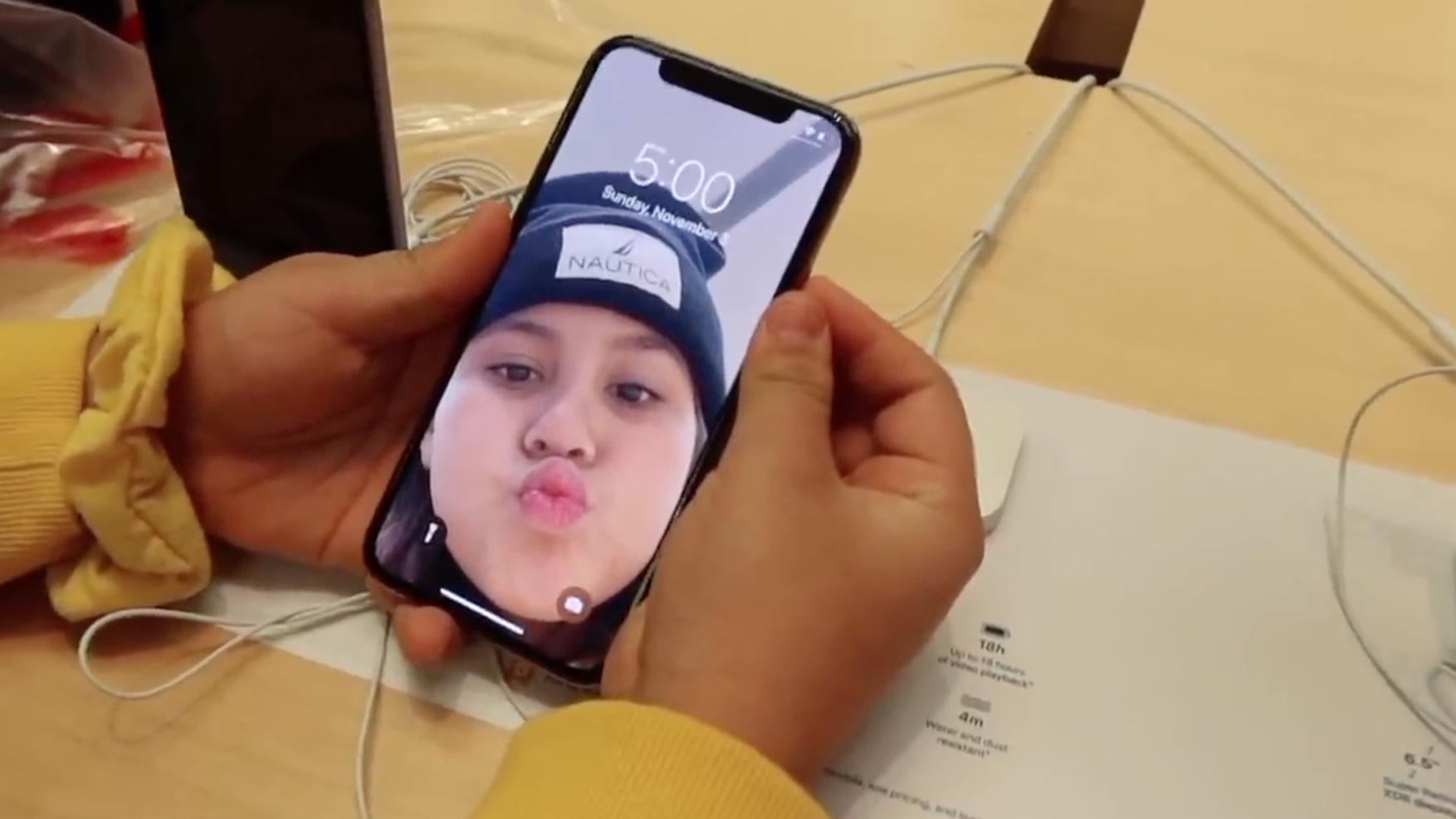

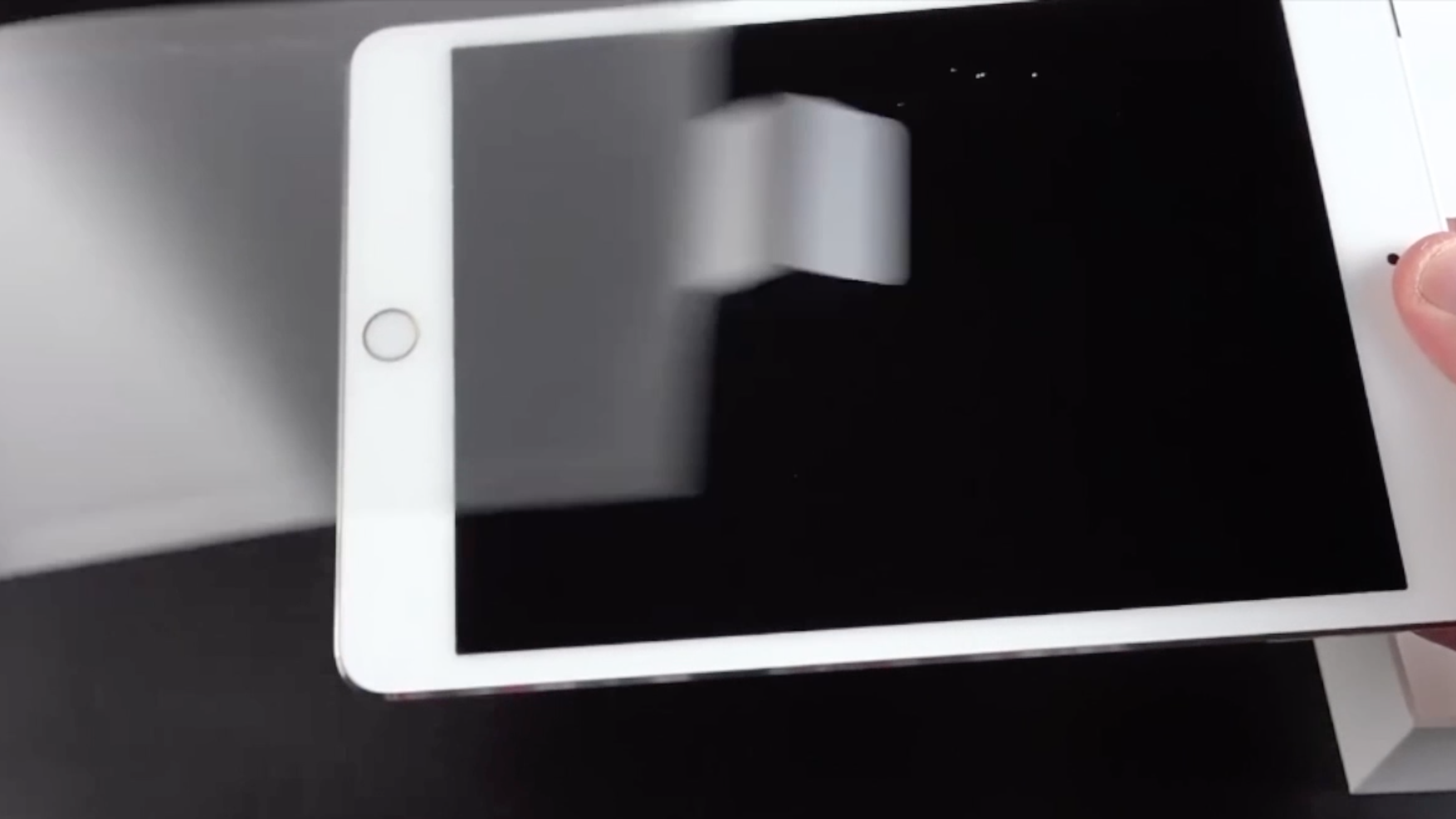
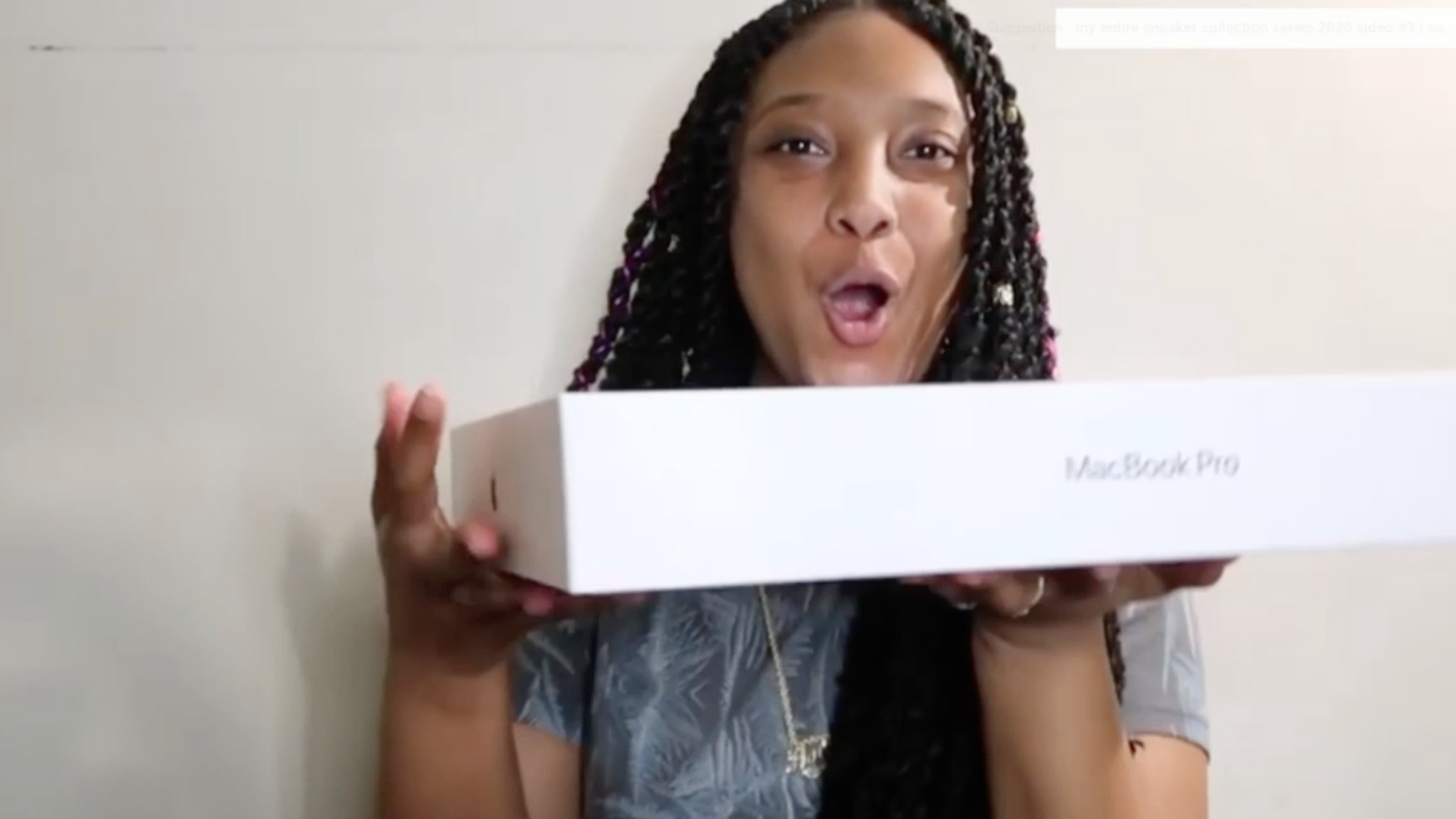
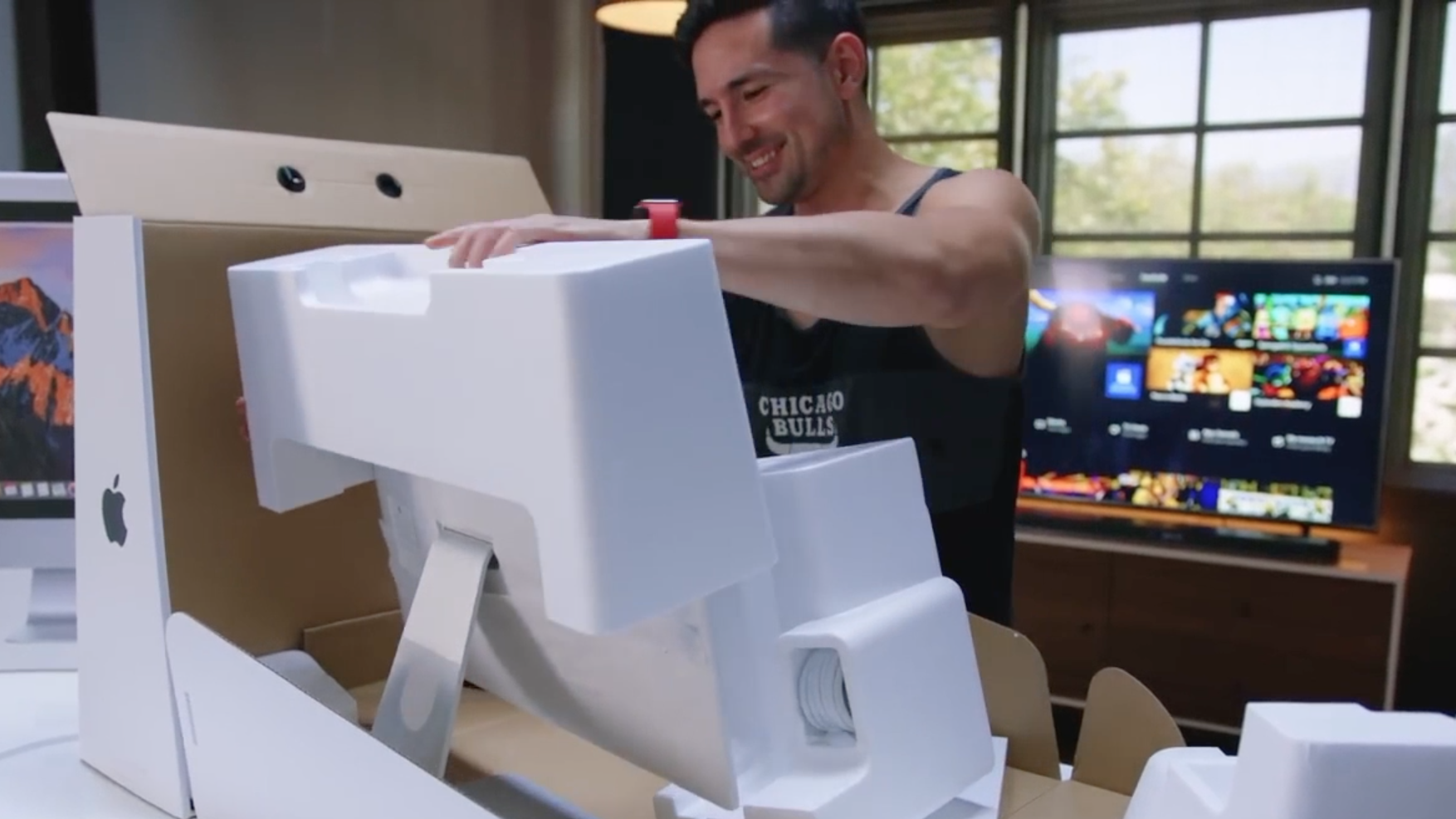
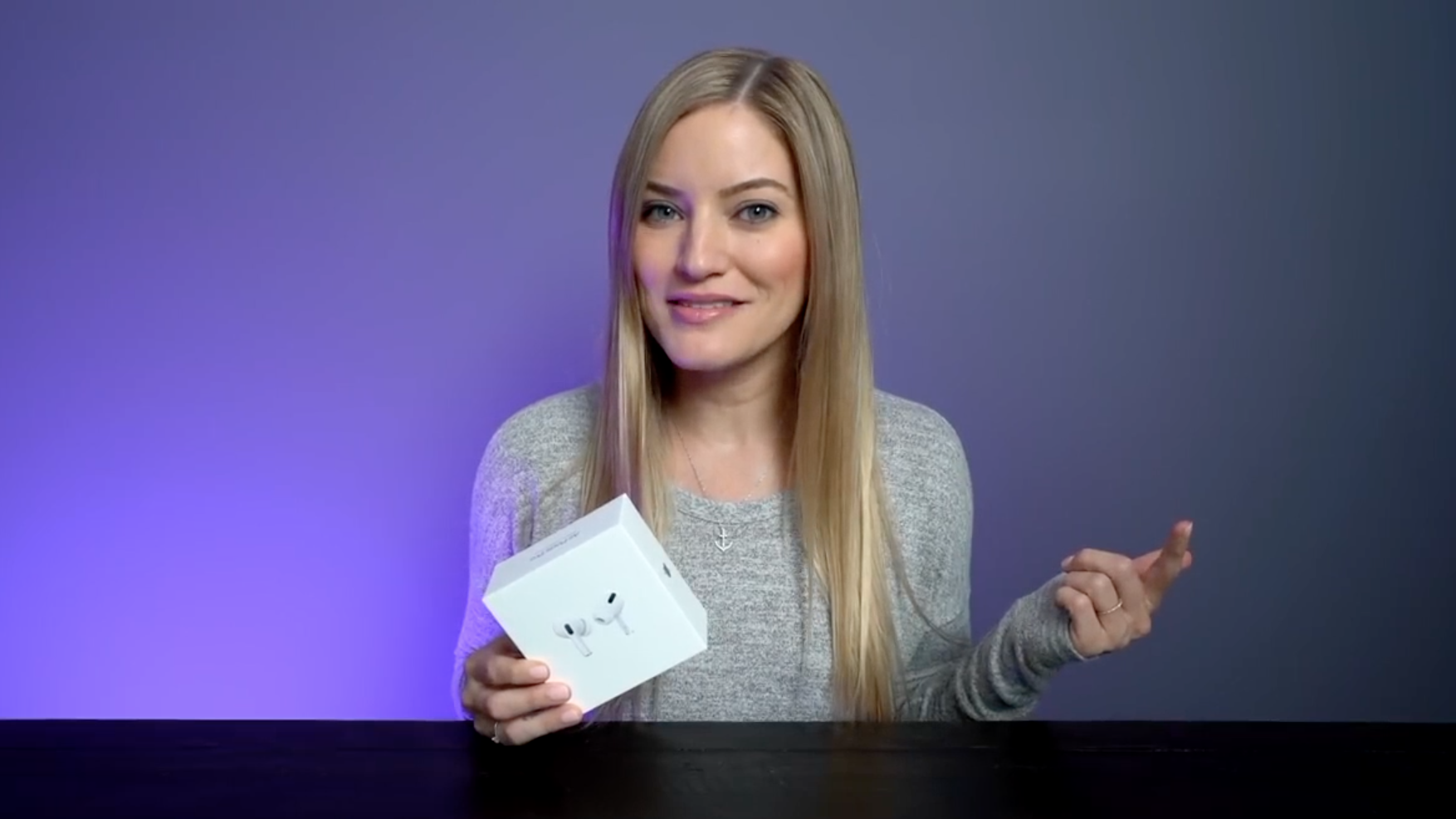
Stills from the video Souvenir de Communion
Second new artwork I’ve shown was The Last Order, which pretends to be Jesus' last dish order (with Deliveroo platform) before his crucifixion. The pastiche and twisted Deliveroo paper bag has a receipt stapled to it, listing the 13 dishes and red wine ordered form a Lebanese restaurent in Brussels. The bag was supposed to be inside a plexiglas vitrine (which used to museify and sacralise the fake trash), but I broke it during the opening night . . . this what it looks like without the plexi vitrine:


The Last Order, 2020
Silkscreen print on craft paper, ink jet print on reciept
As the Deliveroo project also took this christic and sacrosaint dimension, I'm actually thinking of an installation set that would be a remake of Da Vinci's fresco, The Last Supper. I would still keep the original set and background with the architecture, and furniture from Da Vinci's painting, but the scene would be emptied/deserted, with only the rests and trash of the Last Supper. . . kind of like the ‘Tableaux Pièges’ from french Nouveau Realist artist Daniel Spoerri. Thus spectators would arrive afterwards the actual dinner, with guests already gone and Jesus being already crucified. Also, I liked the idea of presenting Deliveroo as the official sponsor brand of Jesus' crucifixion. Like UEFA 2020 (soccer tournaments in the EU) and Takeaway.com's partnership since +/- a year, Jesus' 2020 passion and death would appear as a spectacular and entertaining event, appropriated, merchandized and sponsored by Deliveroo.

Preparatory sketch for Last Supper Installation Project
This thing said, when i showed this drawing to my art teacher Jean-Pierre Muller, he encouraged me to reproduce some of my sketches in large formats (he proposed lithography but i'm more confortable with silkscreen) so i could make a little money and finance these onerous installation projects . . . (like land-artist Cristo did).
What I’ve also shown at Expo Sans Doute was a twisted thermic UberEats bag, on which one could read 'ÜberMensch', from German “beyond-” or “super-human”. The wordplay/pun refers to Nietzsche's philosophical concept which among its field of significations, also depicts a human archetype that is both a saint and a genius. This intervention on a food delivery coursier’s working tool and uniform thus ironically define gig-workers as geniuses and heroes, while society discredits and underestimates gig-economy jobs.

Übermensch, 2020
Silskscreen print and spray paint on fabric, thermic food delivery bag
I am planning to disguise myself once more as a delivery guy, with the twisted bag and jacket, both in public spaces (to re-iterate these everyday/common situations in city streets) but also in institutiuonnal context like fancy art shows openings and see how people would react.
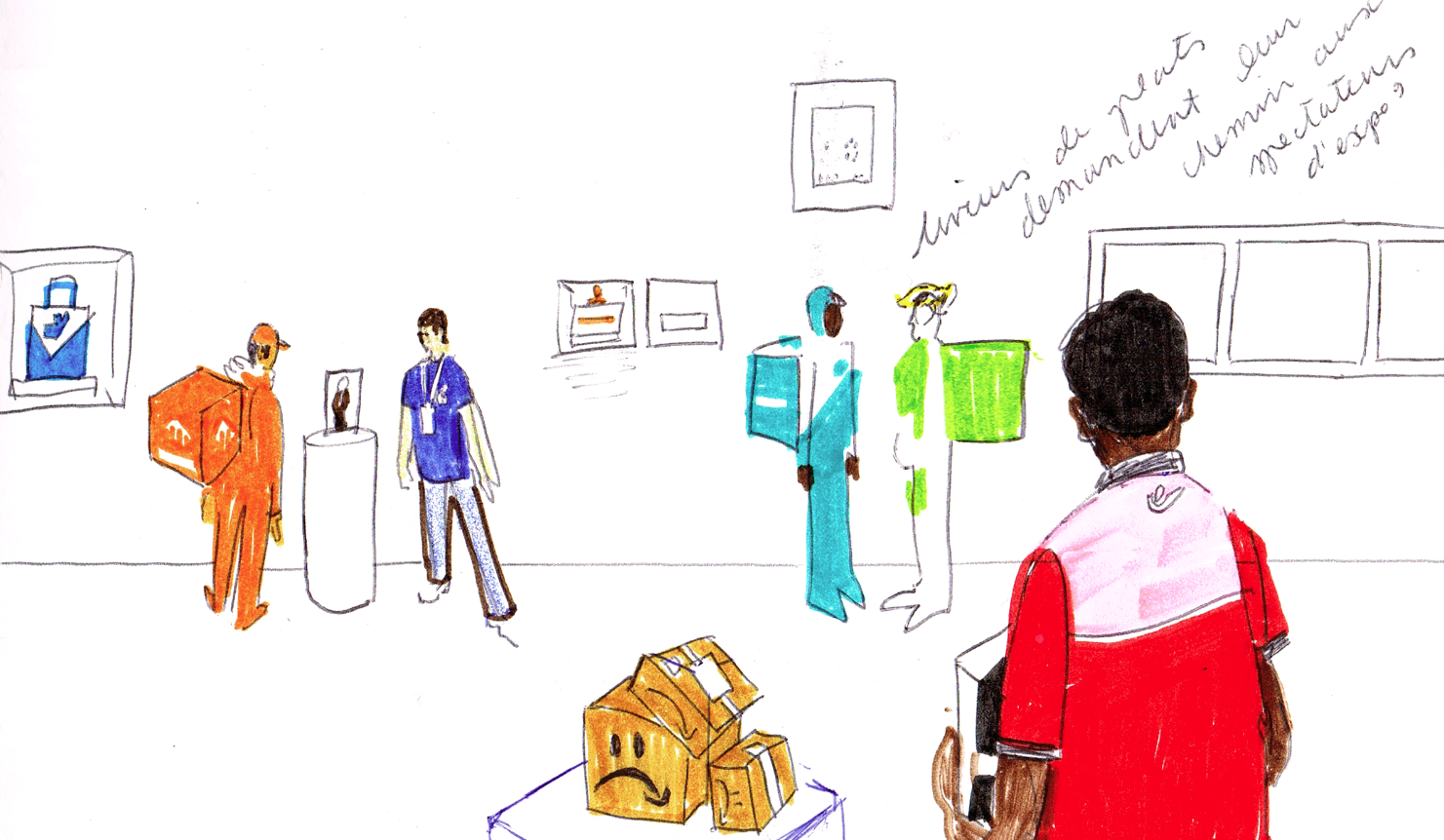
Food delivery coursiers in a white cube, 2020
Color pencil and felt pen on A4 paper
Since the Deliveroo twist and wordplay to "délivrez-nous" had religious and Catholic connotations, i thought i would stick to this registre for new wordplays and puns for UberEats and Takeaway (which are the three main delivery platforms competing with one another in EU metropolis). In the end, i would have a sort of trilogy and trinity.
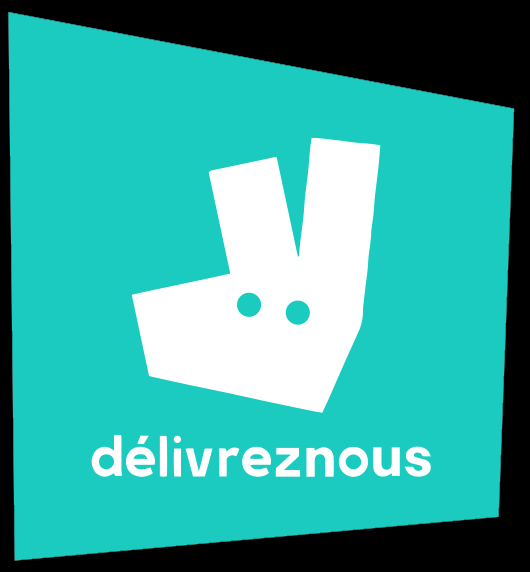


Twisted logos from food delivery brands
Finally I’ve found 2nd hand Takeaway.com uniforms like impermeable jackets, hoodies and cap at good price. Yet I am still struggling to find a thermic back-bag since food delivery coursiers from Takeaway must pick it up and return it back after each shift, to a warehouse located in north of Brussels. Same with promotional orange Takeaway bicycles.
I also struggled to find an orange fabric in Brussels that was the exact same color as Takeaway. So what I did was that I painted a blank white fabric with acrylic paint, screen printed the twisted logo on top of it and sued it back with the rest of the jacket. But i think that for better discretion, I must find a uni/blank orange jacket and cap and make them printed at digital print shops with vinyl thermic prints.
I also pay close attention to how food delivery brands make advertising, depending on the city. For instances, in Brussels, only Takeaway.com makes advertising campaigns through outdoor panels but also on the internet, with targeted ads on YouTube and Instagram (stories and newsfeed). UberEats and Deliveroo also did video advertising campaigns on the internet and television, but apparently not in the BENELUX area, neither in France and rest of Europe. I should do some researches about that.
Takeaway.com outdoor Ads in Brussels’ city streets
Since the lockdown, i'm seeing the same Takeaway.com ad on my Instagram newsfeed and between Stories. They start the ad by evoking the global unusual situation due to COVID-19 pandemic, but assure customers to deliver ‘tastes’ and ‘savors of normality'. Through this advertising, they claim that food abundance and the luxury/caprice of having one's food delivered at home is something normal.
Takeaway.com targetted advertising since March 2020 between Instagram Stories.